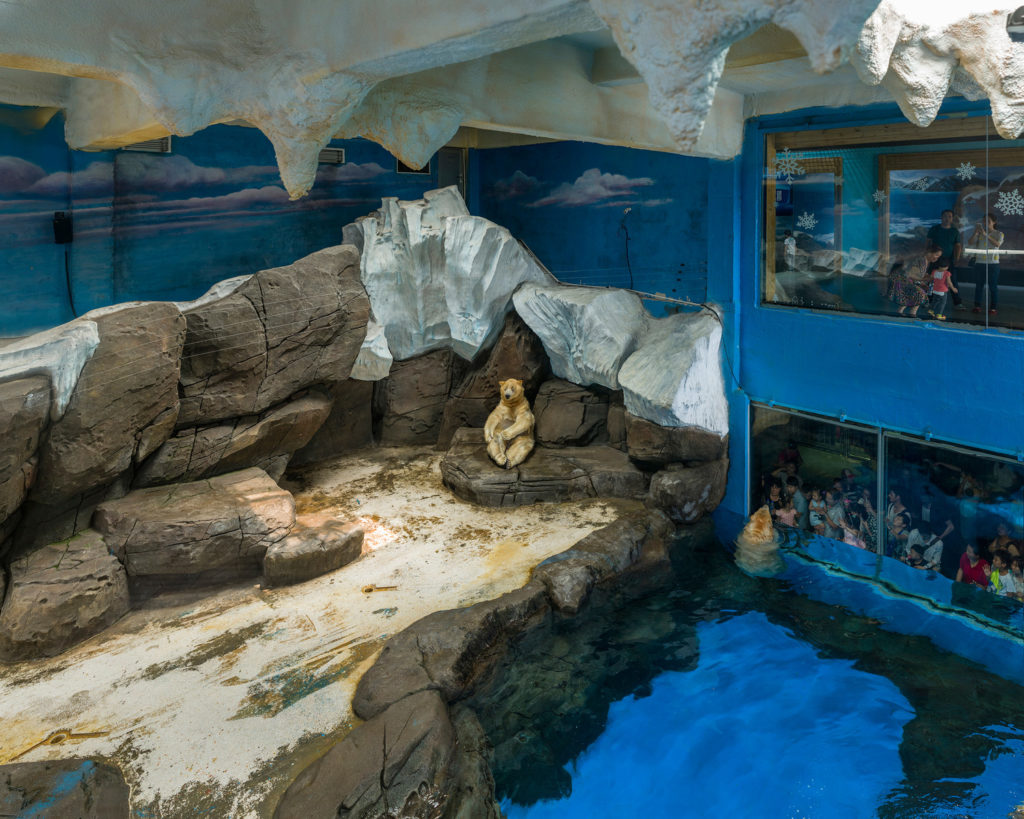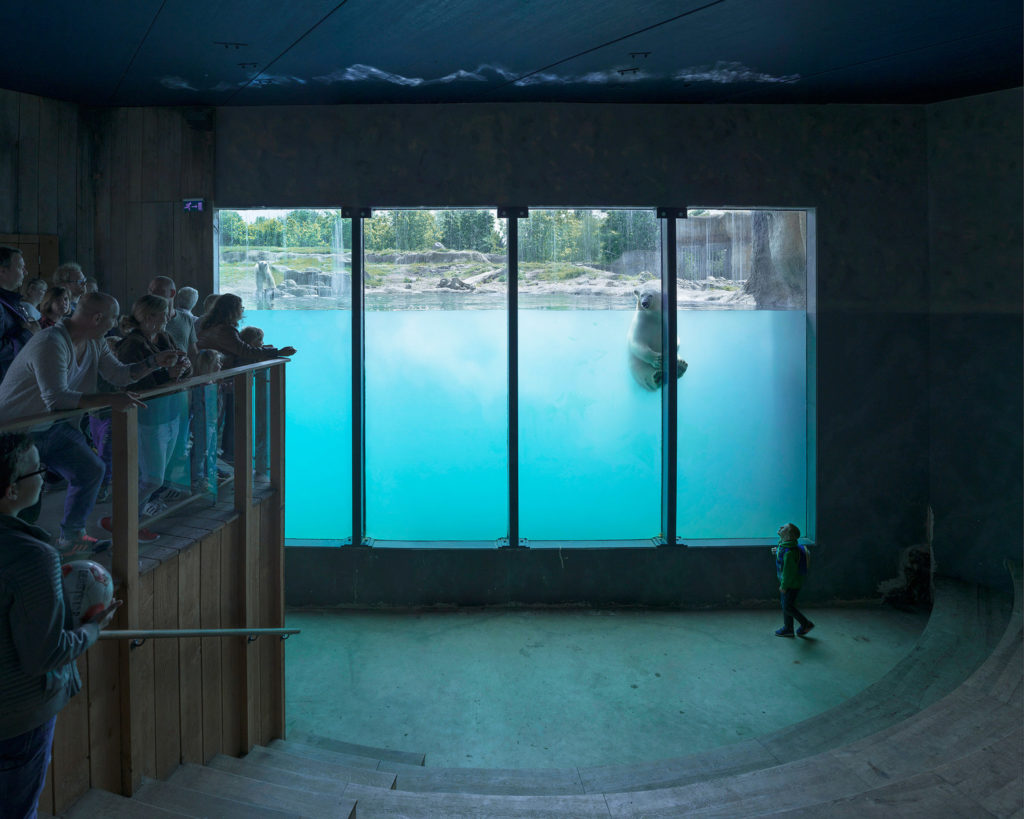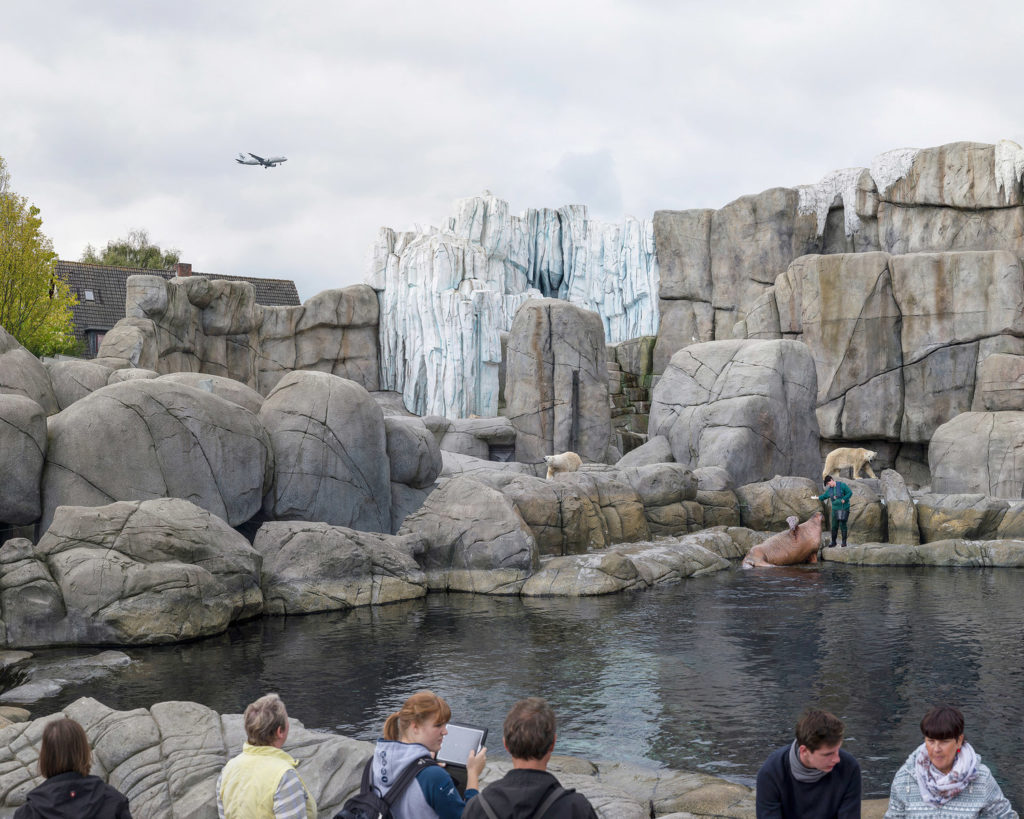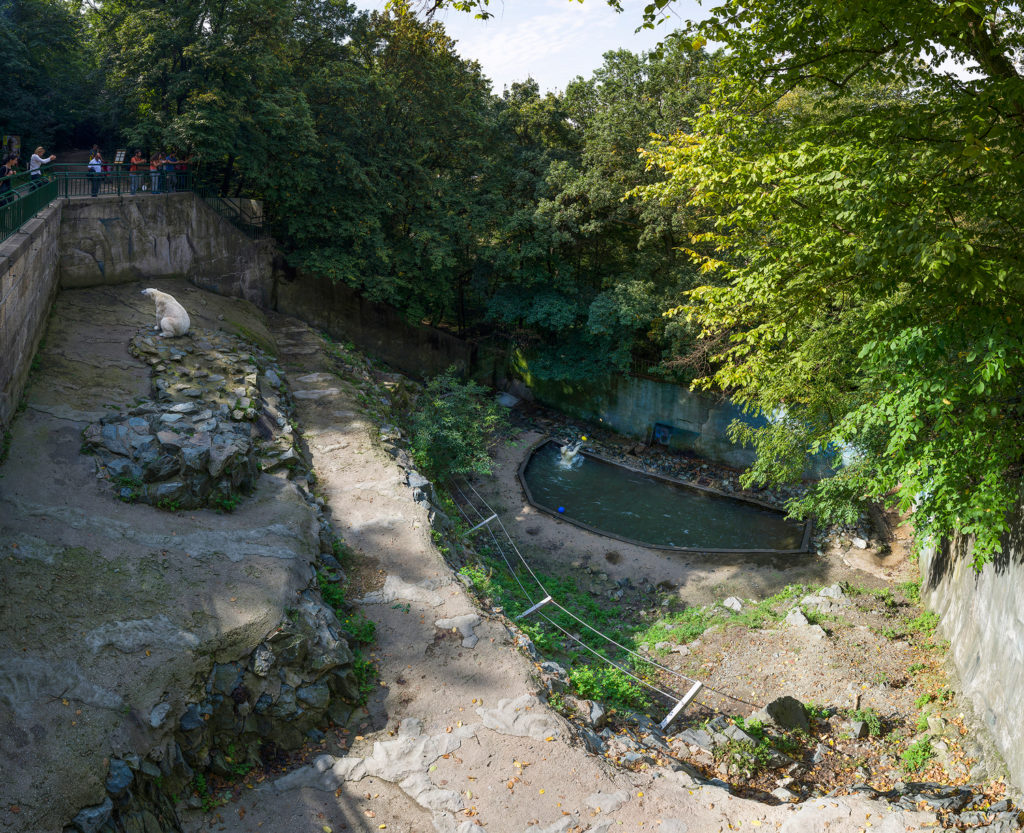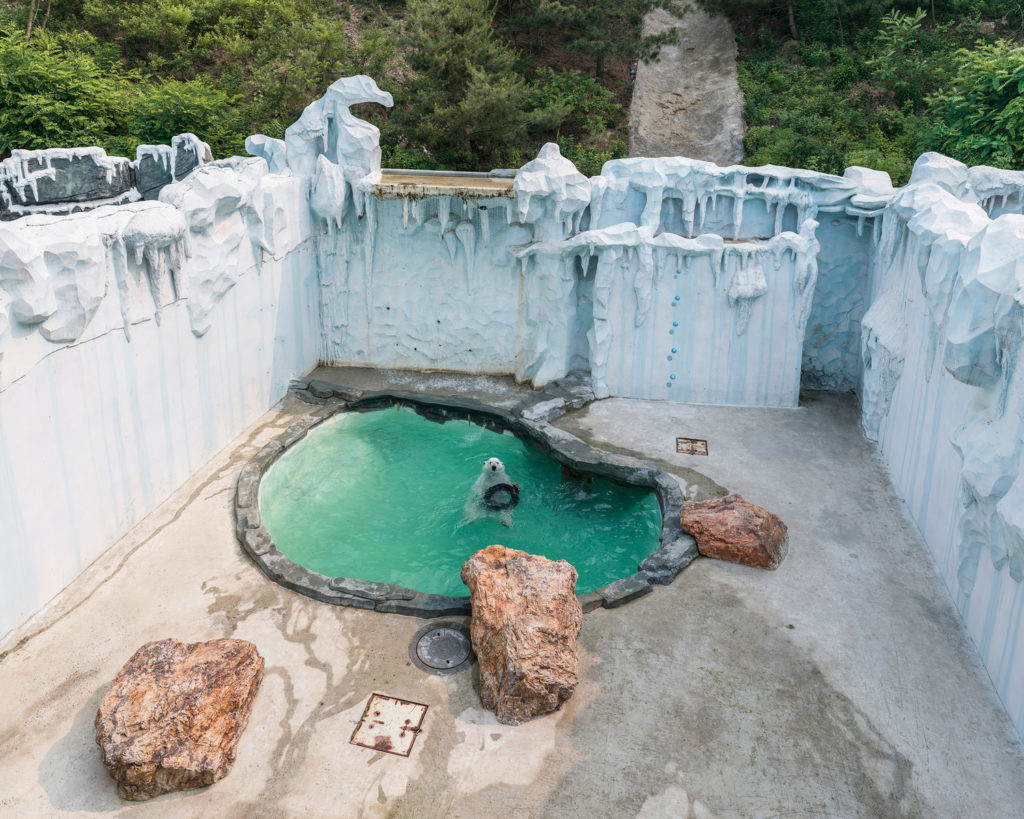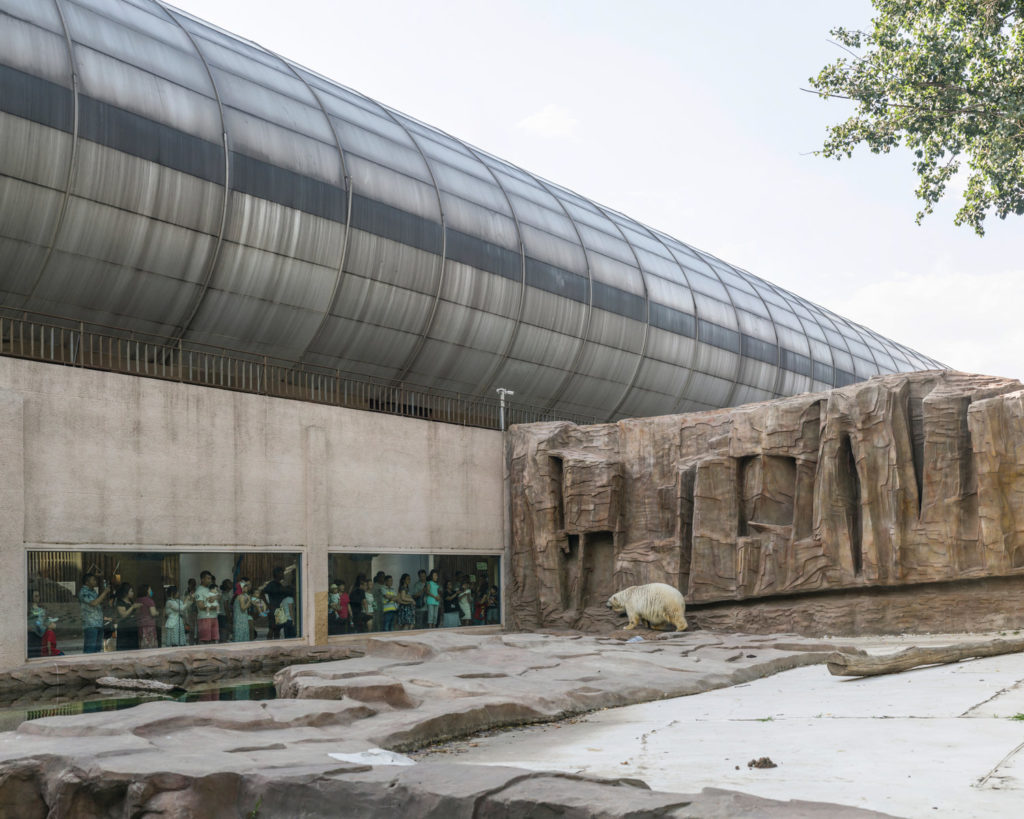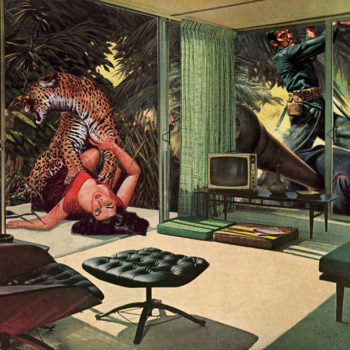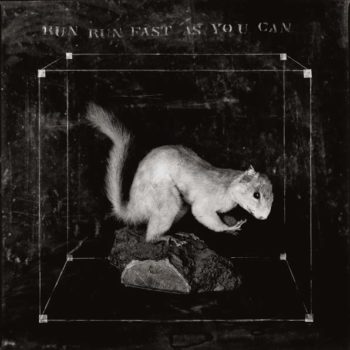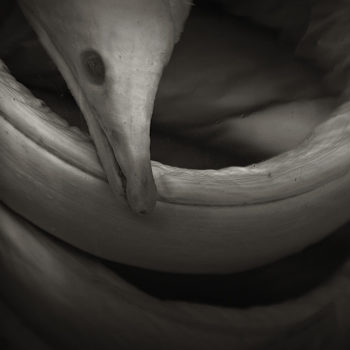There’s a Peter Marlow photo that I love, “A bear sits alone in a pit in Kaliningrad zoo,” taken in Russia. The moment when I saw Sheng Wen Lo’s series White Bear, I thought of this image. It’s curious how pictures like these have the power to incite intense emotions in the viewer, when generally people do not seem to be upset experiencing what’s depicted firsthand.
When I reached out to Sheng, he sent me a comprehensive press kit, and I pored over every file inside. Reading his thoughts and writings about his work was fascinating, and I feel that many of his ideas will affect the way I think about animals and the making of my own photography. There’s so much that I want to share. In the spirit of treating this space as a collection of the artwork I love, and compiling all the information I can find about it, I’ll break the format I traditionally use and begin with Sheng’s artist statement.
From the artist’s statement: “White Bear” depicts polar bears on display and their artificial habitats globally; the project attempts to engage with dilemmas concerning captive animal programs. It has been executed in 26 sites across Europe and China.
“White Bear” is not about polar bears — it studies the visible symptoms amid animals on display and their artificial habitats by focusing on one specific species. These habitats are designed to satisfy both the spectators (audience) and the dwellers (animals). With their effort to mimic the arctic environment, the uncanny structures combined “nature,” “home” and “stage.” Juxtaposed with man-made backgrounds, the enclosures and their furry protagonists formed visions decorated with contrasting elements — grasslands, plateaus, swimming pools, car tires, fake seals, stone stairs, painted icebergs, yachts, airplanes, and even skyscrapers. Under limited space and resources, there are various issues lurking beneath their surfaces.
As natural habitats are being destroyed, it may be reasonable to keep certain species in controlled environments; however, it remains questionable whether some results reflect their causes. The existence of captive white bears portrays this ambiguity. Promoted as exotic tourist-magnets (mega fauna), the bears stand at the singularity points at which the institutions’ contemporary justifications fall into question — the mission of conservation, research and education seem challenged by the interest of entertainment.
Sheng does not subscribe to the belief that “all captive animal programs are evil” or “zoos should not exist,” because, as he states, “animal issues are complex and intertwined with each other.” In an interview about his work, I read that Sheng wishes to avoid anthropomorphism, that he “would not like to make pictures of ‘sad looking’ animals.” He says, “That is not very scientific.”
“I would like to propose another way of looking at animal issues,” Sheng says. “Because when facing these issues, it is very easy to get emotional and let our preconceptions dominate our judgements. In a lot of cases I would argue that is not what [is] best for the animals in the end. There may be a lot of benefits to discuss things scientifically, and make a balance when making judgements.”
While White Bear focuses on polar bears, the project is more broad, using photographs of one species to explore “captive wild animals on display, the dilemma between its intension and cost.” Sheng says, “It is not about whether animals are suitable for captive programs, but rather about whether some animals are not the ideal species to be kept in captivity. Therefore, [I] focused on one particular species, which I believed stand at the crux of this dilemma. In other words, while some animals may benefit from captive programs and serve conservation, education and research purposes, there are species that seems naturally unsuited for artificial habitats.”
Finally, of their man-made habitats, Sheng asks, “I understand it is difficult to use a real iceberg but what is the point of [not] just paint[ing] one instead? Rationally, these bears are born in captivity, so they have probably never seen a real iceberg or a sea lion. I wonder who are the users of these visual objects, and whether the enclosures are homes or stages?”
At first I was attracted to these really beautiful photos that at the same time made me laugh and broke my heart. After spending the better part of a day reading the artist’s words about the work, I feel like I have an entirely new set of considerations to make when photographing animals and when visiting and thinking about zoos. I’m so grateful to know about this work.
Visit artist's site: shengwenlo.com
Found via: Feature Shoot
Posted September 20th, 2018

